- Home
- Jules Verne
Paris in the Twentieth Century Page 15
Paris in the Twentieth Century Read online
Page 15
He walked past that name encrusted in stone without a date, without carved regrets, without emblems, without pomp, a name still respected by time: La Rochefoucauld.
Then he entered a village of graves as clean as little Dutch houses, with their polished grills at the front and their pumiced thresholds. He felt tempted to go inside. "And stay there, " he mused, "resting forever. "
These graves, which recalled every style of architecture—Greek, Roman, Etruscan, Byzantine, Lombard, Gothic, Renaissance, Twentieth-century— clustered in a semblance of equality; there was a likeness in these dead—all had turned to dust, whether beneath marble, granite, or black wood crosses.
The young man walked on; gradually he climbed the funereal hill, and aching with fatigue leaned on the mausoleum of Béranger and Manuel[78]; this plain stone cone, without ornaments or sculptures, still stood like the pyramid of Giza and protected the two friends united in death.
Twenty feet away, General Foy[79] kept watch and, draped in his marble toga, seemed to protect them still. Suddenly it occurred to Michel that he should seek among these names; yet not one of them reminded him of those whom time had respected; many, and among these the most elaborately designed, were illegible amid their vanished emblems, carvings of clasped hands now parted, of coats of arms quite ragged now on these graves dead in their turn. Yet he walked on, turned, walked in another direction, leaning against the iron grills, glimpsed Pradier[80], whose marble Mélancolie was falling into dust, Désaugiers[81], mutilated within his bronze medallion, the tumulary memorial of his students to Gaspard Monge[82], and the veiled mourner of Etex[83] still crouching at Raspail's[84] tomb.
Climbing farther, he passed a superb monument, its style pure, its marble still proud, with a frieze of naked young girls running and leaping around it, and he read:
To Clairville[85]
His grateful Fellow Citizens
He walked on. Nearby was the unfinished grave of Alexandre Dumas, a man who all his life had searched for the tomb of others.
Now he was in the section of the rich, who still indulged themselves in the luxury of opulent apotheoses; here the names of honest women mingled unconcernedly with those of famous courtesans, those who were able to save up for a mausoleum for their old age; some of the monuments here might easily be taken for brothels. Farther along, he found the graves of actresses on which the poets of the day came to deposit their conceited mourning verses. Finally Michel dragged himself toward the other end of the cemetery, where a magnificent Dennery[86] slept his eternal sleep in a theatrical sepulcher beside Barrière's simple black cross, where the poets encountered each other as in the corner of Westminster, where Balzac emerging from his stony shroud still waited for his statue, where Delavigne[87], Souvestre[88], Bérat[89], Plouvier[90], Banville, Gautier, Saint-Victor, and a hundred others were no more, even by name.
Lower down, Alfred de Musset, mutilated on his plinth, saw dying at his side the willow he had requested in his gentlest and least sentimental verses. At this moment, Michel's mind cleared; his bunch of violets fell out of his coat. He picked it up and lay it, weeping, on the grave of the abandoned poet. Then he walked higher, higher still, remembering and suffering, and through a clearing in the cypress groves he caught sight of Paris.
Far behind towered Mont Valérien, to the right Montmartre, still awaiting the Parthenon the Athenians would have placed on this acropolis, to the left the Pantheon, Notre-Dame, Sainte-Chapelle, Les Invalides, and farther still the lighthouse of the Port de Grenelle, thrusting its slender beam five hundred feet into the air. Below lay Paris and its jumble of a hundred thousand houses, among which rose the smoke- capped chimneys of ten thousand factories. Farther down, the lower cemetery; from here, some groups of graves seemed like tiny towns, with their streets and squares, their houses and their signs, their churches, even their cathedrals, represented by a more vainglorious grave.
And finally, up above, floated the armored balloons, lightning conductors, which deprived the thunderbolts of any excuse to fall upon the unguarded houses, and wrested all Paris from their disastrous rage.
Michel would have liked to cut the ropes which held them captive and let the city be destroyed under a rain of fire. "O Paris!" he exclaimed with a gesture of despairing rage. "O Lucy!" he murmured, falling unconscious on the snow.
End of Paris in the Twentieth Century
About the Author
Jules Verne was born in Nantes in 1828, of legal and seafaring stock, and though educated for the law refused to work seriously at anything but writing. Despite moderate success with plays, Verne did not achieve fame until publication of his novella Five Weeks in a Balloon (1853). Coupling a gift for adventure writing with the public interest in technological discoveries, Verne continued with a series of highly successful prophetic science fiction and adventure stories, including Twenty Thousand Leagues Under the Sea (1870) and Around the World in 80 Days (1873). By the time of his death in 1905 he had written close to one hundred books.
About the Translator
Richard Howard, born in Cleveland in 1929, is the author of ten volumes of poetry, the third of which won a Pulitzer Prize in 1970, and of many translations from the French. He is a professor of English at the University of Houston and is poetry editor of The Paris Review.
About the Type
The paper book was set in Perpetua, a typeface designed by the English artist Eric Gill, and cut by The Monotype Corporation between 1928 and 1930. Perpetua is a contemporary face of original design, without any direct historical antecedents. The shapes of the roman letters are derived from the techniques of stonecutting. The larger display sizes are extremely elegant and form a most distinguished series of inscriptional letters.
The ebook uses Calibri for its default font. Calibri is also a contemporary sans serif font.
Notes
* * *
[1] Paul-Louis Courier (1772-1825): A brilliant polemicist, one of the strongest figures of intellectual opposition to the legitimist and clerical reaction after 1815.
[2] Alphonse Karr: French litterateur, a friend of Verne's publisher Hetzel, known for his satirical verve.
[3] Adolphe Joanne: French geographer, founder of the Guides Joanne, ancestor of the Guides Bleus.
[4] Jean-Baptiste Jobard: Belgian engineer of French origin, the source of numerous innovations and inventions.
[5] Étienne Lenoir: Inventor of a gas motor which is the origin of all present-day automobile motors.
[6] Thomas Russell Crampton: English engineer, inventor of one of the first high-speed locomotives.
[7] Joseph Prudhomme: Character created by Henri Monnier, the type of self-satisfied and sententious bourgeois.
[8] Charles-Paul de Kock: Prolific author of anecdotal and humorous novels, very popular with a wide public but constantly derided by cultivated circles in the Romantic period.
[9] Claude Perrault: French architect and scientist, brother of the fabulist Charles Perrault.
[10] Charles Stanhope: English writer and scientist.
[11] Maurel and Jayet: Inventors of a calculating machine, presented to the Academy of Sciences in 1849.
[12] Henri Mondeux: A prodigious calculator; a simple shepherd from Tours, now forgotten after an ephemeral celebrity.
[13] Charles Wheatstone: British inventor of one of the first electric telegraphs, and of the rheostat.
[14] Giovanni Caselli: Italian scientist and inventor of the "Pan-telegraph, " which permitted telegraphic reproduction of writing and drawing.
[15] Watt and Burgess: A method of treating wood still in use which produces paper from tree trunks within a few hours.
[16] Calino: The main character in a successful vaudeville by Barriére, whose naïveté became proverbial.
[17] Jeanselme: A family of cabinetmakers celebrated in the nineteenth century.
[18] Claude Goudimel: French composer, a Protestant killed in the Saint Bartholomew Massacre.
[19] Les Huguenots: A famous op
era by Meyerbeer.
[20] Thilorier: A physicist famous for his public experiments on the liquefaction of carbonic gas.
[21] Sigismund Thalberg: A famous piano virtuoso and composer, briefly a rival of Franz Liszt.
[22] Émile Prudent and Jules Schulhoff: Pianists and composers admired in Verne's day.
[23] Guillaume Tell: A famous opera by Rossini.
[24] Robert le Diable: A famous opera by Meyerbeer.
[25] Louis-Joseph-Ferdinand Hérold: French operatic composer.
[26] Daniel-François-Esprit Auber: French operatic composer.
[27] Félicien-César David: French composer, much admired by Berlioz.
[28] Victor Massé: French composer of operas and operettas.
[29] "Enfin Wagnerbe vint": A play on words using Boileau's famous line from l'Art Poétique "Enfin Malherbe vint" and the name of Wagner.
[30] Jacques Amyot: French Renaissance author, famous for translations of Plutarch and Longus.
[31] Mathurin Régnier: French sixteenth-century poet.
[32] Ancillon: French Protestant family, emigrated to Germany after the Revocation of the Edict of Nantes, including several generations of writers, historians, and statesmen.
[33] Charles Nodier: One of the first French Romantic writers.
[34] Vincent Voiture: French poet and wit of the seventeenth century.
[35] Jean-Jacques Pélissier: Marshal of France, notably distinguished during the Crimean War by capturing Sevastopol after a siege of eleven months and by the conquest of the Malakoff fortress, which protected the city.
[36] Pierre-Jean de Béranger: Author of patriotic songs of liberal and Napoleonic inspiration.
[37] Saint-Point: A village near Mâcon, the site of Lamartine's château.
[38] Jules-Gabriel Janin: French novelist and critic, a friend of Verne's publisher Hetzel.
[39] Charles Monselet: French journalist and gastronome, a friend of Verne's publisher Hetzel.
[40] Frédéric Soulié: French novelist and dramatic author, a friend of Verne's publisher Hetzel.
[41] Léon Gozlan: French journalist, at one time Balzac's secretary; a close friend of Verne's publisher Hetzel.
[42] Victor Cousin: French philosopher, professor of history and philosophy at the Sorbonne.
[43] Pierre Leroux: One of the chief French socialist thinkers of the nineteenth century.
[44] Émile de Girardin: French journalist and polemicist.
[45] Louis-François Veuillot: French Catholic journalist and polemicist.
[46] Claude-Antoine Noriac: French dramatic author.
[47] Jean-Baptiste-Alfred Assollant: French author of books for young people.
[48] Paradol (Lucien-Anatole Prevost-Paradol): French political journalist.
[49] Aurélien Scholl: French novelist and chronicler, friend of Verne's publisher Hetzel.
[50] Edmond-François-Valentin About: A brilliant and caustic French writer, friend of Verne's publisher Hetzel.
[51] Francisque Sarcey: French dramatic critic for forty years.
[52] Jean-Baptiste Louvet de Couvray: French eighteenth-century novelist and statesman.
[53] Champfleury (Jules-François-FeIix Husson): French critic and novelist, a polemicist for the realist school in art and literature, a friend of Verne's publisher Hetzel.
[54] Jean Mace: French journalist and educator.
[55] Joseph Méry: French poet, novelist, and playwright.
[56] P. J. Stahl: The nom de plume of Hetzel himself, who obviously published him "scrupulously."
[57] Arséne Houssaye: French critic, journalist, and novelist.
[58] Paul Bins, Comte de Saint-Victor: French literary critic known for his complex style.
[59] turpe: vile.
[60] Pulchre: Beautiful.
[61] The Great Eastern: Legendary steamship 110 meters long, for many years the largest in the world; laid the telegraphic cable joining Europe and America in 1866.
[62] The battle of the Amalekites: episode from the Old Testament, Exodus 17:12.
[63] An Auvergnat into the bargain: In French popular theater of the nineteenth century, Auvergnats were pilloried for rustic crudeness and naive rapacity.
[64] Roland's mare: Adorned with all the virtues, and lacking only... existence.
[65] François Ponsard: French dramatic author, friend of Verne's publisher Hetzel.
[66] Émile Augier: Popular French dramatic author; wrote Gabrielle.
[67] Théodore Barriére: Prolific vaudevillist, author of Calino.
[68] François-Paul Meurice: French litterateur and playwright, friend of Victor Hugo.
[69] Auguste Vacquerie: French litterateur and playwright, in Hugo's circle.
[70] Gustave Flourens: A brilliant academic, appointed to the chair of natural history at the College de France at the age of twenty-five, killed during the Commune, 1871.
[71] Benoît Fourneyron: French engineer and politician, inventor of the hydraulic turbine.
[72] Koechlin: Family of French industrialists.
[73] Electric light: Regular utilization of electric light began in 1885.
[74] Hungarian method: Satire on Liszt, whose legendary virtuosity defied understanding.
[75] The Grecostasis: In the Roman Forum, the place where foreign deputations were made to wait for the Roman Senate.
[76] François-Antoine Habeneck: French composer and orchestra conductor; introduced Beethoven's symphonic music into France.
[77] Ernest Reyer: French opera composer.
[78] Jacques-Antoine Manuel: French politician; a symbol of liberal opposition to the first Restoration.
[79] Maximilien-Sébastien Foy: French General, who like Manuel became an emblem of liberal opposition under the first Restoration.
[80] James Pradier: Swiss sculptor.
[81] Marc-Antoine Désaugiers: French vaudevillist.
[82] Gaspard Monge: French geometrician, founder of the École Polytechnique.
[83] Antoine Etex: French sculptor and architect.
[84] François-Vincent Raspail: French biologist and republican politician.
[85] Louis-François Clairville: Popular French vaudevillist.
[86] Adolphe-Philippe Dennery: French man of the theater; adapted Verne's Around the World in Eighty Days for the stage.
[87] Jean-François-Casimir Delavigne: French dramatist.
[88] Émile Souvestre: French novelist and playwright.
[89] Eustache Bérat: French songwriter.
[90] Édouard Plouvier: French playwright.

 Michael Strogoff; Or the Courier of the Czar: A Literary Classic
Michael Strogoff; Or the Courier of the Czar: A Literary Classic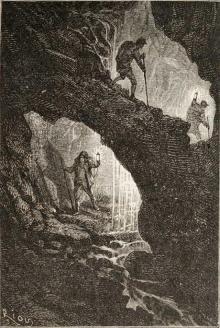 Voyage au centre de la terre. English
Voyage au centre de la terre. English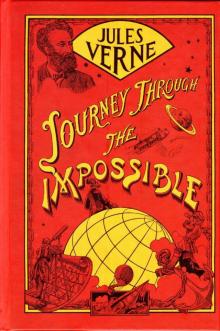 Journey Through the Impossible
Journey Through the Impossible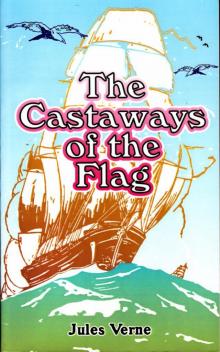 The Castaways of the Flag
The Castaways of the Flag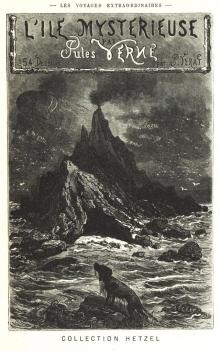 L'île mystérieuse. English
L'île mystérieuse. English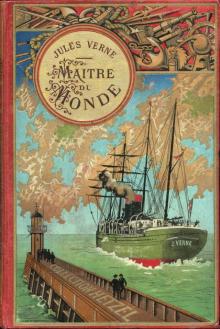 Maître du monde. English
Maître du monde. English Around the World in Eighty Days
Around the World in Eighty Days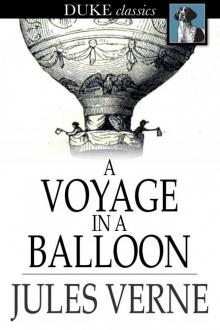 A Voyage in a Balloon
A Voyage in a Balloon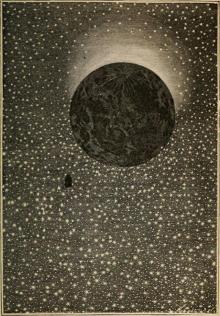 From the Earth to the Moon, Direct in Ninety-Seven Hours and Twenty Minutes: and a Trip Round It
From the Earth to the Moon, Direct in Ninety-Seven Hours and Twenty Minutes: and a Trip Round It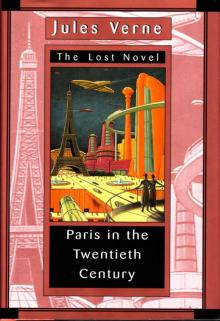 Paris in the Twentieth Century
Paris in the Twentieth Century City in the Sahara - Barsac Mission 02
City in the Sahara - Barsac Mission 02 The English at the North Pole
The English at the North Pole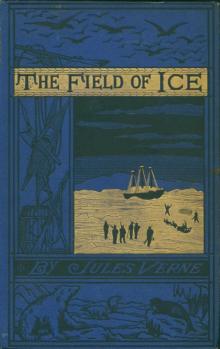 The Field of Ice
The Field of Ice From the Earth to the Moon
From the Earth to the Moon Un capitaine de quinze ans. English
Un capitaine de quinze ans. English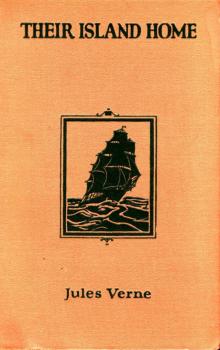 The Mysterious Island
The Mysterious Island Les indes-noirs. English
Les indes-noirs. English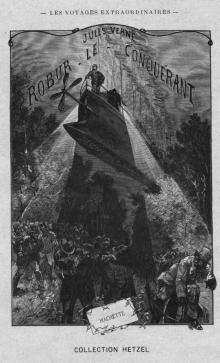 Robur-le-conquerant. English
Robur-le-conquerant. English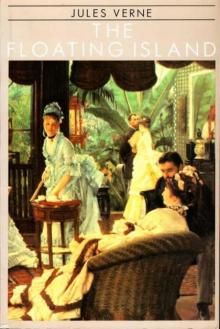 Propeller Island
Propeller Island Around the World in Eighty Days. Junior Deluxe Edition
Around the World in Eighty Days. Junior Deluxe Edition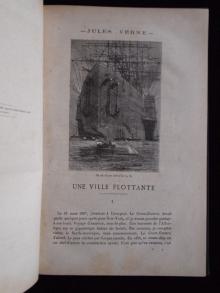 Les forceurs de blocus. English
Les forceurs de blocus. English In the Year 2889
In the Year 2889 Journey to the Centre of the Earth
Journey to the Centre of the Earth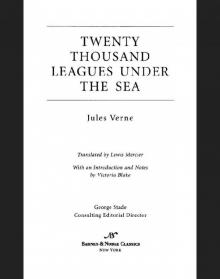 Twenty Thousand Leagues Under the Sea
Twenty Thousand Leagues Under the Sea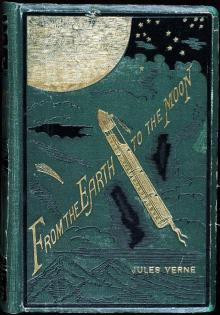 From the Earth to the Moon; and, Round the Moon
From the Earth to the Moon; and, Round the Moon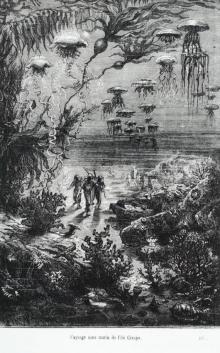 Vingt mille lieues sous les mers. English
Vingt mille lieues sous les mers. English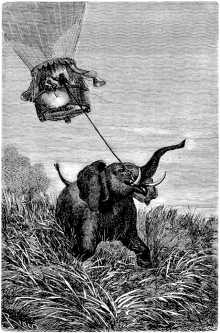 Cinq semaines en ballon. English
Cinq semaines en ballon. English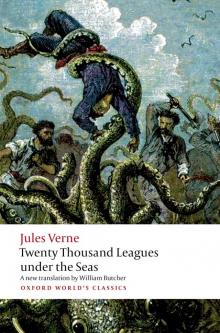 Twenty Thousand Leagues under the Seas
Twenty Thousand Leagues under the Seas Face au drapeau. English
Face au drapeau. English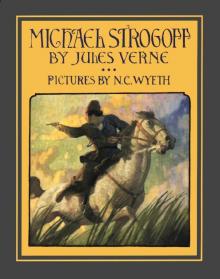 Michael Strogoff; Or, The Courier of the Czar
Michael Strogoff; Or, The Courier of the Czar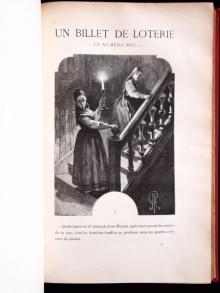 Un billet de loterie. English
Un billet de loterie. English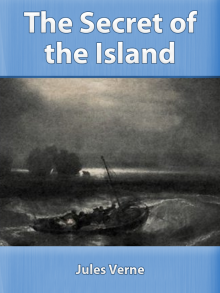 The Secret of the Island
The Secret of the Island Off on a Comet! a Journey through Planetary Space
Off on a Comet! a Journey through Planetary Space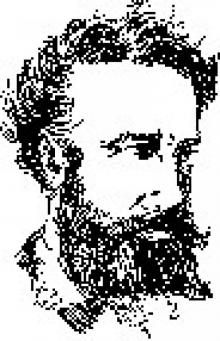 Into the Niger Bend: Barsac Mission, Part 1
Into the Niger Bend: Barsac Mission, Part 1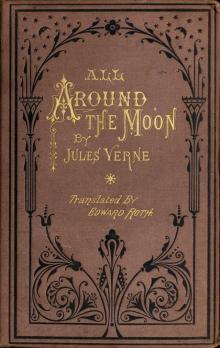 All Around the Moon
All Around the Moon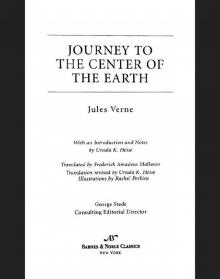 A Journey to the Center of the Earth - Jules Verne: Annotated
A Journey to the Center of the Earth - Jules Verne: Annotated 20000 Lieues sous les mers Part 2
20000 Lieues sous les mers Part 2 Robur-le-Conquerant
Robur-le-Conquerant Les Index Noires
Les Index Noires Michael Strogoff; or the Courier of the Czar
Michael Strogoff; or the Courier of the Czar 20000 Lieues sous les mers Part 1
20000 Lieues sous les mers Part 1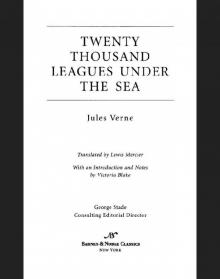 Twenty Thousand Leagues Under the Sea (Barnes & Noble Classics Series)
Twenty Thousand Leagues Under the Sea (Barnes & Noble Classics Series) Five Weeks In A Balloon
Five Weeks In A Balloon Journey to the Center of the Earth
Journey to the Center of the Earth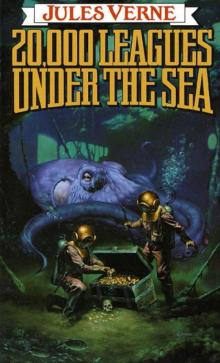 20,000 Leagues Under the Sea
20,000 Leagues Under the Sea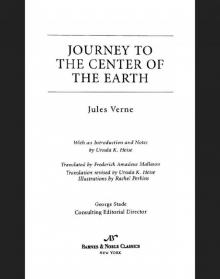 Journey to the Center of the Earth (Barnes & Noble Classics Series)
Journey to the Center of the Earth (Barnes & Noble Classics Series)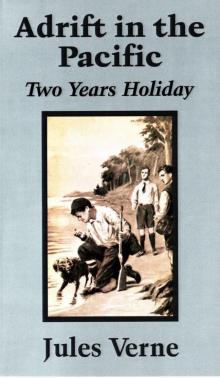 Adrift in the Pacific-Two Years Holiday
Adrift in the Pacific-Two Years Holiday The Collected Works of Jules Verne: 36 Novels and Short Stories (Unexpurgated Edition) (Halcyon Classics)
The Collected Works of Jules Verne: 36 Novels and Short Stories (Unexpurgated Edition) (Halcyon Classics) The Survivors of the Chancellor
The Survivors of the Chancellor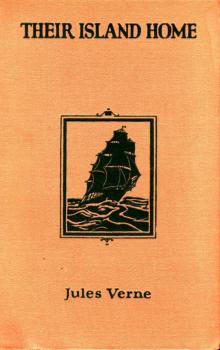 Their Island Home
Their Island Home Le Chateau des Carpathes
Le Chateau des Carpathes Les Cinq Cents Millions de la Begum
Les Cinq Cents Millions de la Begum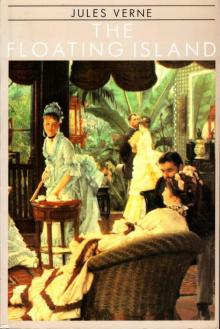 The Floating Island
The Floating Island Cinq Semaines En Ballon
Cinq Semaines En Ballon Autour de la Lune
Autour de la Lune